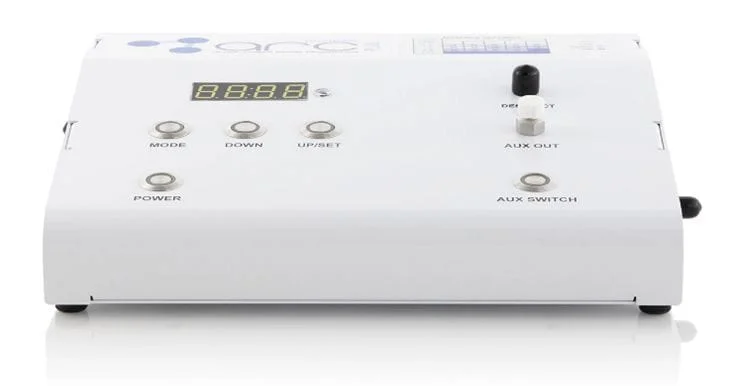If you haven't heard about ozone therapy then you are missing out. In fact, the therapeutic use of ozone has been around for over 100 years and has been documented by many European doctors for its effectiveness in treating many diseases. In 1929, a book called "Ozone and its Therapeutic Action" listed 114 diseases successfully treated by ozone. Then in 1933, the American Medical Association set up to suppress all medical treatments that were competitive to drug therapy. The suppression of ozone therapy began then and continues in the US till this day.
Currently, reports show that physicians are treating the following diseases listed below using different forms of ozone therapy. The largest promoting groups are, The European Cooperation and Medical Ozone Societies, which is made up of national affiliates in Germany, Austria, Italy, Switzerland, The National Center of Scientific Research in Cuba and The Australia Multicultural Health Cooperation.
So how exactly does ozone work?
Ozone or (O3) is an active form of oxygen or (O2). It's a very strong oxidizer that quickly burns up any toxins, viruses, parasites and pathogens without harming your good cells.
Why and how does it avoid good cells?
Because your good cells produce an antioxidant coating that prevents them from being oxidized. Diseased cells can't do this and therefore are the ONLY ones targeted. There are many different methods for administering ozone to oxygenate the body. The method that we currently use most in our office is insufflation.
Treatment Description
Our office currently uses an oxygenator and a small medical grade ozone generator. Together, a gas mixture of ozone and oxygen is created and pumped into the ears or nasal cavity over the course of a few seconds or up to 11 minutes.
Isn’t Ozone exposure bad for you? So how can Ozone Therapy now be a therapy?
Chronic breathing exposure (meaning breathing in ozone for 8 hours a day for multiple weeks, months and years) is bad. However, you do not inhale any ozone during ozone therapy treatments. Without inhaling ozone there is no risk of permanent damage or side effects.
This information can be found in the book, "The New Oxygen Prescription", which includes many case studies proving ozone therapy helps against a wide range of diseases.
- Acariasis
- Acne
- Acrodermatitis
- Acute otitis media
- Acute vestibulopathy
- Addisons disease
- Adenocarcinoma
- Adenovirus
- Adrenalitis
- AIDS
- Alopecia
- ALS (Lou Gehrig disease)
- Alzheimer's disease
- Amebiasis
- Amenorrhea Amyloidosis
- Anal fissures
- Anemia
- Angina
- Angiodema
- Ankylosing spondylitis
- Anthrax
- Apthous stomatitis
- Arterial occlusion
- Arteriosclerosis
- Arthritis
- Arthrosis
- Asthma
- Athlete's foot
- Babesiosis
- Bacterial pneumonia
- Bartonellosis
- Basalinoma
- Bell palsy
- Bornholm myalgia
- Botulism Bronchitis
- Bronchopulmonary aspergillus
- Broncospasm
- Brucellosis
- Bullous pemphigus
- Burkit lymphoma
- Cancer of all types
- Candidiasis
- Carbuncles
- Cavernous sinus thrombosis
- Cellulitis
- Cerebral atrophy
- Cerebrovascular accident
- Chagas disease Chicken pox
- Chlamydia
- Cholecystitis
- Chronic pain
- Chronic pulmonary disease
- Cirrhosis of the liver
- Coccidiomycosis
- Colitis
- Dengue fever
- Dermatitis Diabetes
- Diverticulitis
- Echovirus
- Eczema
- Ehrlichiosis
- Encephalitis
- Encephalomyelitis
- Endocarditis
- Endometritis
- Endophthalmitis
- Enteric fever
- Enteritis necroticans Environmental hypersensitivity
- Epidermoid carcinoma
- Epidermolitic keratosis
- Epidermophytosis
- Epididymitis
- Epstein-Barr virus
- Erysipelas
- Erythema migrans
- Flavivirus
- Folliculitis
- Food poisoning Fulminant varicella
- Furuncle
- Gangrene
- Genital warts
- Giardiasis
- Glaucoma
- Glioma
- Glomerular membrane disease Glomerulonephritis
- Goodpasture syndrome
- Gout
- Graves disease
- Guillan-Barre syndrome
- Hairy leukoplakia
- Heart arrhythmia
- Heart disease
- Hematoma
- Hemolytic anemia
- Hemorrhage
- Hemorrhagic fever
- Hemorrhoids
- Hepatitis Herpes of all types
- Histoplasmosis
- HIV
- HTLV
- Huntingdon chorea
- Hypercholesterolemia
- Hypersensitivity
- Hyperthyroidism
- Hypotension
- Ichthyosis
- Ileitis Polyoma virus
- Impetigo Influenza
- Intravascular coagulation
- Ischemic optic neuropathy
- Landry syndrome
- Lassa fever
- Leishmaniasis
- Leptospirosis
- Leukemia
- Leukoencephalopathy
- Leukopenia
- Listeriosis Lupus erythematosus
- Lyme disease
- Lymphocytic choriomeningitis
- Lymphogranuloma
- Lymphoid pneumonia
- Lymphoma
- Malaria
- Mastoiditis
- Measles
- Melanoma
- Melioidosis
- Meniere disease
- Migraine
- Molluscum ecthyma
- Mononucleosis
- Morbilloform
- Multiple sclerosis Mumps
- Myalgia
- Myasthenia gravis
- Mycobacterium avium complex
- Mycosis
- Myelitis
- Myocarditis
- Myonecrosis
- Myositis
- Neutropenia colitis Neurodermatitis
- Ocular trachoma
- Optic nerve dysfunction
- Optic neuritis
- Oral erythema
- Orbital cellulitis
- Orchitis Cryptospiridiosis
- Osteomyelitis
- Osteoporosis
- Osteosarcoma
- Otosclerosis
- Ocular trachoma
- Optic nerve dysfunction
- Optic neuritis
- Oral erythema
- Orbital cellulitis
- Orchitis Cryptospiridiosis
- Osteomyelitis
- Osteoporosis
- Osteosarcoma
- Otosclerosis
- Rabies
- Radiculoneuritis
- Relapsing fever
- Reynaud's disease
- Reynold's syndrome Rheumatoid arthritis
- Rhinitis
- Rift Valley fever
- Rubella
- Salmonella
- Salpingitis
- Scabies
- Scleroderma
- Senile dementia
- Senile macular degeneration
- Sennutsu fever
- Septicemia
- Shingles Shock
- Sickle cell anemia
- Sinusitis
- Skin burns
- Spinalioma
- Staphyloococcus
- Stiatonigral degeneration
- Stomatitis
- Stroke
- Syphilis
- T.cruzi
- Tardive dyskinesia
- Tendinitis
- Tetanus
- Thoracic zygomycosis
- Thrombopenic purpura
- Thrombophlebitis
- Thyroiditis
- Tinea versicolor
- Tinnitus Togavirus
- Tourette syndrome
- Toxic amblyopia
- Toxoplasmosis
- Traveller's diarrhea
- Trench fever
- Trypanosomiasis
- Tuberculosis
- Tularemia
- Ulcers
- Urethritis
- Urticaria Uterine spasm
- Uveitis
- Varicella pneumonia
- Varicose veins Vascular retinopathy
- Vasculitis
- Varicella pneumonia
- Varicose veins Vascular retinopathy
- Vasculitis


